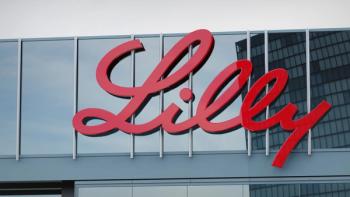
- Pharmaceutical Commerce - September/October 2011
Fix the Drug Shortage Problem- Now
If it weren’t for the fact that patients are suffering—even dying—because of drug shortages, the issues surrounding it would make an excellent MBA project for some enterprising student. As being reported in this issue and the recent past, the number of drugs in short supply has been growing, and now tops 210. This growth has occurred despite the efforts of the FDA Drug Shortage Program, which has averted dozens of shortages in the past two years through coordinated efforts with manufacturers, expedited regulatory actions and in a few cases, emergency importation from abroad. And while some observers take an “oh, well…” attitude, the hospital-pharmacy folks are calling the situation a national crisis, affecting critical oncologics and other therapies for needy patients.
But you can’t simply blame sloppy or inattentive manufacturers. There is a complicated and fascinating interplay between wholesalers, group purchasing organizations (GPOs), specialty or independent distributors and retail and hospital pharmacies that affect the course and severity of these shortages. One production line at one generic manufacturer shuts down; other manufacturers can’t immediately pick up the slack and a drug is now on allocation. Wholesalers kick in semi-automated processes that limit sales to prior consumption, but as one wholesaler put it, “you can’t sell what you don’t have.” Buyers (including the hospitals that are complaining most vociferously) scramble to stock up. The shortage becomes self-perpetuating. We’ve seen this kind of economic activity before, notably during the gasoline shortages of the 1970s, when, among other factors, motorists felt the need to have topped-up fuel tanks as often as possible. And some other participants look to make a quick profit—legally, but morally questionably—from the shortage.
Progress in modernizing pharma supply chains—something this publication has energetically supported—has had the unintended consequence of making supply chains less flexible. Over the past decade, manufacturers and distributors have worked hard to make their supply chains lean and fast, even as they are now extended around the globe. Turnover has gone up; inventory reserves have gone down. At the same time, manufacturing, distribution and purchasing have each become more consolidated: There are big manufacturers, big wholesalers, big GPOs and pharmacy benefit managers (PBMs), big retail and hospital chains. In the particular case of generic injectables—which are used primarily in hospitals and thus purchased primarily by GPOs (said to control pricing in 80% of the hospital market)—the effect of deeply discounted pricing, to the point of making some production uneconomical, seems to be a factor. And some small, independent distributors are the only “flex” in the system that can obtain product and act as a backup source to buyers.
If the production and distribution of pharmaceuticals were just another consumer market, you could say that, in a macro sense, shortages are bound to happen and that’s why trading partners should choose carefully whom to deal with. But—and this is our position—if pharmaceutical supply is a special case of consumer markets, with a different set of priorities—it is incumbent on all participants in the market to act energetically to correct these ongoing shortages. GPhA has taken one step in this direction, with a call to work with FDA to develop a “defined and updated list of medically necessary drugs” that would warrant closer coordination of production, supply and distribution. That’s something that everyone else in the system should join in with. The ongoing shortages, which show no sign of abating soon, are a black eye on the entire industry.
Articles in this issue
almost 14 years ago
A Roadmap to Optimizing Marketing Operationsabout 14 years ago
HDMA distributor sales are up 4.6%, to $274.5 billion through 2010about 14 years ago
Next chapter in drug shortages debate focuses on independent wholesalersabout 14 years ago
UPS Healthcare Logistics announces new cold chain optionabout 14 years ago
Contract Packagers, 3PLs Vie for Pharma 'Kitting' Servicesabout 14 years ago
2011 Product Security Report: Back to the Futureabout 14 years ago
Drug shortages are opening the door to price gougingNewsletter
Stay ahead in the life sciences industry with Pharmaceutical Commerce, the latest news, trends, and strategies in drug distribution, commercialization, and market access.





